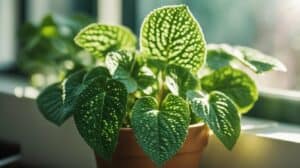Bauhinia Variegata, also known as the orchid tree, is a stunning flowering tree that can add beauty and elegance to any yard.
With its delicate pink and white flowers, the orchid tree is a popular choice for those looking to enhance their outdoor space.
But what exactly is the orchid tree, and how can you grow it in your own yard?

The orchid tree is a tropical and subtropical plant that is native to Southeast Asia.
It is named for its unique flowers, which resemble orchids and bloom in clusters throughout the year.
The tree can grow up to 30 feet tall and has a spreading, rounded canopy that provides ample shade.
While it is typically grown as an ornamental tree, the orchid tree also has a variety of medicinal uses and is used in traditional medicine throughout its native range.
In this article, we will explore the many benefits of growing the orchid tree in your yard and provide tips for successfully cultivating this beautiful plant.
Understanding Bauhinia Variegata
Species Overview
Bauhinia Variegata, commonly known as the orchid tree, is a species of flowering tree belonging to the Fabaceae family.
It is native to Southeast Asia, including India, China, and Vietnam, and is widely cultivated for its ornamental value.
The tree can grow up to 10-12 meters in height and has a spreading canopy, making it an excellent shade tree.
The leaves of the orchid tree are unique, resembling the shape of a butterfly or a heart, which is why it is also called the butterfly tree.
The flowers are large, showy, and fragrant, with five petals in shades of pink, purple, and white.
The tree blooms profusely during the winter and spring months, adding a splash of color to any garden.
Ornamental Value
The orchid tree is a popular ornamental plant, prized for its attractive foliage and showy flowers.
It is commonly used as a specimen tree in gardens, parks, and along streets.
The tree’s spreading canopy provides excellent shade, making it ideal for outdoor seating areas and playgrounds.
The orchid tree is also a favorite among gardeners because of its low maintenance requirements.
It is drought-tolerant, disease-resistant, and can thrive in a wide range of soil types.
The tree is also easy to propagate, making it an excellent choice for gardeners looking to expand their collection.
Cultural Significance
Bauhinia Variegata has significant cultural and historical importance in many countries.
In India, the tree is known as the Kachnar tree and is used in traditional Ayurvedic medicine to treat various ailments.
The tree is also used in religious ceremonies and is believed to have spiritual significance.
In Hong Kong, the orchid tree is the official emblem of the city and is featured on its flag and coat of arms.
The tree is also widely used in landscaping and is a common sight in parks and public spaces throughout the city.
Overall, Bauhinia Variegata is an excellent choice for gardeners looking to add a touch of color and elegance to their garden.
Its unique foliage, showy flowers, and cultural significance make it a valuable addition to any landscape.
Cultivation Guidelines

Choosing a Planting Location
Bauhinia Variegata, also known as the Orchid Tree, thrives in warm climates and requires full sun exposure.
When selecting a location to plant the tree, it is important to choose an area that receives at least six hours of direct sunlight per day.
The tree can grow up to 30 feet tall, so ensure that the planting location is spacious enough to accommodate its mature size.
Soil Requirements and Preparation
Bauhinia Variegata prefers well-draining soil that is rich in nutrients.
Before planting, prepare the soil by removing any weeds or debris, and loosen the soil to a depth of at least 12 inches.
Incorporate organic matter, such as compost or aged manure, to improve soil fertility and texture.
Planting and Initial Care
Plant Bauhinia Variegata during the spring or fall, when the weather is mild and there is less risk of extreme temperatures.
Dig a hole that is twice as wide and deep as the root ball of the tree, and gently place the tree in the hole.
Fill the hole with soil and firmly pack it around the base of the tree.
After planting, water the tree thoroughly and apply a layer of mulch around the base to retain moisture and suppress weeds.
Water the tree regularly, especially during the first year of growth, to ensure that the soil remains moist.
Fertilize the tree with a balanced fertilizer during the growing season to promote healthy growth.
By following these guidelines, anyone can successfully grow a beautiful Bauhinia Variegata tree in their yard.
Maintenance and Growth

Watering and Feeding
Bauhinia Variegata is a low-maintenance plant, but it still requires proper watering and feeding for healthy growth.
During the growing season, water the plant deeply once a week to ensure the soil remains moist. However, avoid over-watering as it can lead to root rot.
During the winter months, reduce watering frequency to once every two weeks.
Feeding the plant with a balanced fertilizer once a month during the growing season can help promote healthy growth and blooming.
Make sure to follow the instructions on the fertilizer package and avoid over-fertilizing, as it can harm the plant.
Pruning and Shaping
Pruning and shaping the Bauhinia Variegata tree is essential for maintaining its shape and size.
The best time to prune the tree is during the dormant season, which is typically in late winter or early spring.
Remove any dead or diseased branches, and cut back any overgrown or crossing branches to maintain the tree’s shape.
To shape the tree, prune the top branches to encourage lateral growth and a fuller appearance.
Additionally, remove any suckers that grow from the base of the tree to prevent them from taking over.
Pest and Disease Management
Bauhinia Variegata is generally resistant to pests and diseases, but it can still be susceptible to some common issues.
Keep an eye out for aphids, mealybugs, and spider mites, which can be controlled with insecticidal soap or neem oil.
The tree can also be affected by fungal diseases such as powdery mildew and leaf spot.
To prevent these diseases, avoid overhead watering and ensure proper air circulation around the tree.
If the tree does become infected, treat it with a fungicide according to the instructions on the label.
Propagation Techniques

Bauhinia Variegata can be propagated through various techniques including seed propagation, cuttings, and grafting.
Each method has its own advantages and disadvantages. Here are some details on each method:
Seed Propagation
Seed propagation is the most common method of propagating Bauhinia Variegata. It is an easy and inexpensive method that can be done by anyone.
The seeds of the orchid tree are easily available in the market. To propagate the plant through seeds, follow the steps below:
- Soak the seeds in water for 24 hours before planting.
- Plant the seeds in a well-draining potting mix.
- Water the seeds regularly and keep the soil moist.
- Germination usually takes 2-3 weeks.
Cuttings and Grafting
Cuttings and grafting are also popular methods of propagating Bauhinia Variegata.
These methods are preferred when the desired plant characteristics are to be preserved. Here are the steps involved in each method:
Cuttings
- Take a cutting from a healthy plant.
- Dip the cutting in rooting hormone powder.
- Plant the cutting in a well-draining potting mix.
- Water the cutting regularly and keep the soil moist.
- Roots usually develop in 4-6 weeks.
Grafting
- Take a healthy rootstock plant and a scion from a desired plant.
- Cut the rootstock and scion at a 45-degree angle.
- Join the two pieces together and wrap them with a grafting tape.
- Keep the plant in a warm and humid place for a few weeks until the graft is successful.
Propagation is an important aspect of growing Bauhinia Variegata. With the right techniques, anyone can propagate this beautiful tree in their own yard.
Frequently Asked Questions

What are the ideal conditions for planting a Bauhinia variegata in my yard?
Bauhinia variegata thrives in warm and humid climates. It prefers well-draining soil with a pH level between 6.0 and 7.5.
Planting in a location that receives full sun to partial shade is ideal.
How often should I water my orchid tree to ensure healthy growth?
Bauhinia variegata requires regular watering, especially during the growing season. It is important to keep the soil moist, but not waterlogged.
Watering once a week is usually sufficient, but this may vary depending on the climate and soil conditions.
Can orchid trees thrive in colder climates, or do they require a warm environment?
Bauhinia variegata is a tropical tree and requires a warm environment to thrive. It cannot tolerate frost or freezing temperatures.
In colder climates, it can be grown indoors or in a greenhouse.
What are the common pests or diseases that affect Bauhinia variegata and how can I prevent them?
Some common pests that affect Bauhinia variegata include aphids, mealybugs, and spider mites. Diseases such as root rot and leaf spot can also occur.
Regular inspection and maintenance can help prevent these issues.
Insecticidal soap or neem oil can be used to control pests, and proper watering and pruning can prevent diseases.
How can I tell if my orchid tree is receiving the right amount of sunlight?
Bauhinia variegata requires full sun to partial shade. If the tree is not receiving enough sunlight, it may have stunted growth or yellowing leaves.
If it is receiving too much sunlight, the leaves may be scorched or wilted.
Observing the tree’s growth and appearance can help determine if it is receiving the right amount of sunlight.
What are the differences between the various types of orchid trees available for planting?
There are several types of Bauhinia variegata, including the pink and white varieties. They all require similar growing conditions and care.
The main difference is in the color of the flowers.
When selecting a type of orchid tree to plant, consider the color of the flowers and the overall size of the tree.














